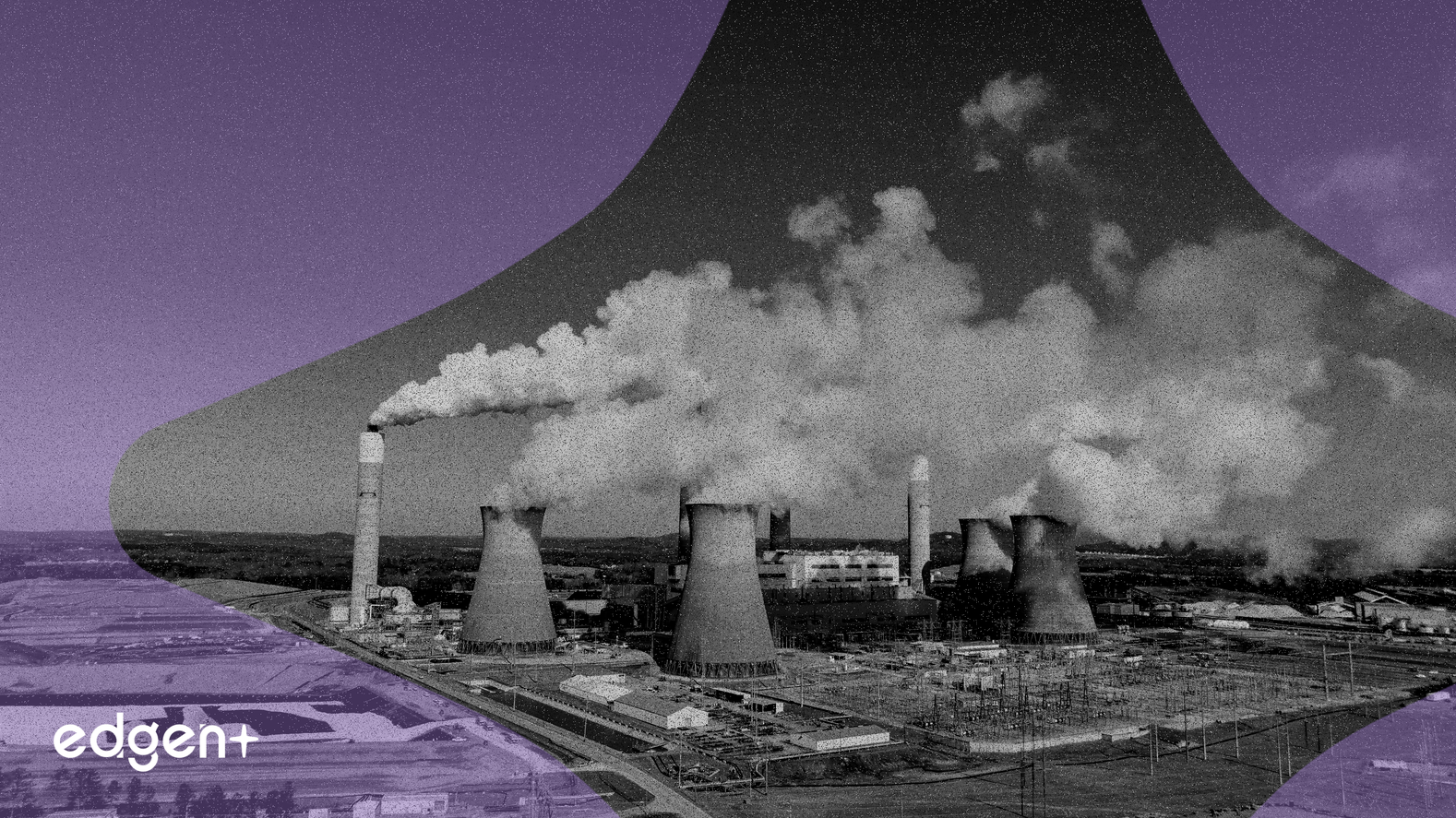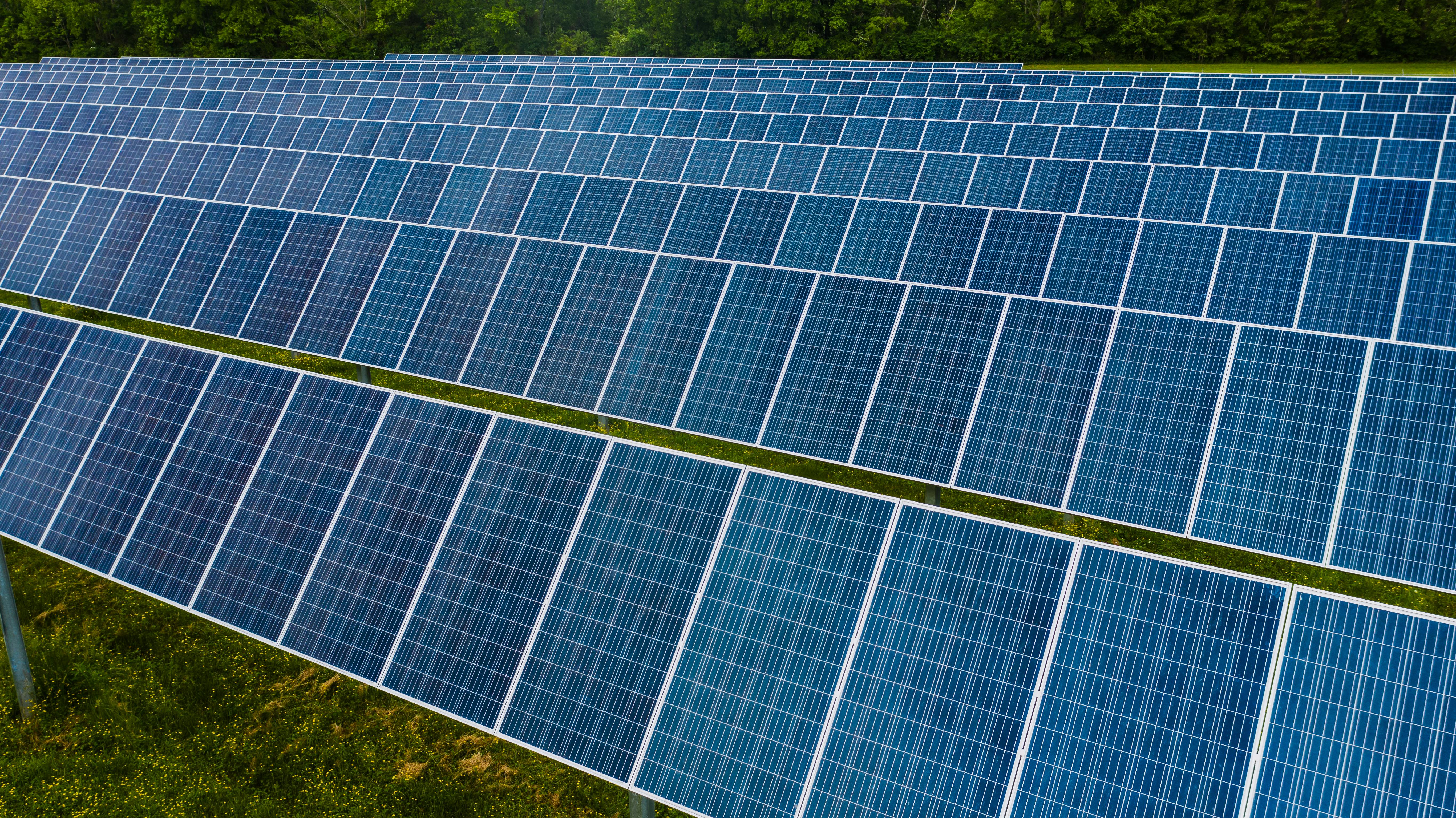Products
Trading Strategies
Markets
Ask AI About SO

No Data Yet

## U.S. Utility Sector Anticipates Major Infrastructure Spending Surge U.S. investor-owned energy and water utilities are preparing for a significant period of infrastructure development, with projected capital expenditures exceeding **$1 trillion** between 2025 and 2029. This substantial commitment underscores a strategic shift towards modernizing the nation's energy grid and meeting escalating demand. ## The Event in Detail: Elevated Capital Expenditures Fueling Sector Growth Aggregate energy utility investments are forecast to reach **$227.80 billion** in 2026, **$233.30 billion** in 2027, and **$214.84 billion** in 2028. The updated 2025 capital expenditure forecast for 47 investor-owned energy utilities now stands at **$214.70 billion**, marking a **24% increase** from the **$173 billion** spent in 2024, and nearly a **50% hike** compared to the **$146 billion** invested in 2022. The 2029 forecast for energy capital expenditure also increased to **$164.4 billion** from a prior **$153 billion**. These substantial investments are directed towards enhancing reliability and resiliency, developing new gas, nuclear, renewable, and other generation capacity, and integrating advanced technologies such as advanced metering, cybersecurity protocols, electric vehicles, and battery storage solutions. Within the smaller investor-owned water utility sector, total capital expenditure is projected to grow approximately **15%** in 2025. ## Analysis of Market Reaction: Bullish Sentiment and Sector Outperformance This robust capital expenditure forecast is driving a discernibly **bullish sentiment** across the utility and infrastructure-related sectors. The planned outlays are anticipated to fuel **elevated rate case activity**, which typically allows utilities to recover investments and secure regulated returns, thereby augmenting profit growth. Companies such as **The Southern Company (SO)** and **Entergy Corporation (ETR)** are among those specifically identified as poised to benefit from these investment trends. Market indicators reflect this optimism; the **Utility and Communication Construction Index (UCCI)** has demonstrated strong performance, with a **69.4% increase** over the past 12 months, significantly outperforming the **S&P 500's 30.9%** rise in the same period. This divergence signals robust investor confidence in the utility and infrastructure development segment. ## Broader Context & Implications: AI, Policy, and the Energy Transition The surge in investments is largely propelled by a confluence of factors, including **federal legislation** passed in 2021 and 2022 supporting infrastructure development, **state-level energy transition plans**, and a dramatic increase in electricity demand, particularly from **data centers** supporting artificial intelligence (AI) and cloud computing technologies. U.S. data center energy demand is projected to grow at a compound annual rate of **15%** from 2023 to 2030, potentially accounting for **8% of total U.S. power demand by 2030**, up from about **3% in 2024**. This necessitates rapid deployment of new generation and transmission and distribution (T&D) infrastructure. The shift towards **clean energy** is a key driver, with global clean energy investment expected to reach **$2.2 trillion in 2025**, double the projected fossil fuel investment. The increasing cost-effectiveness of renewables, particularly solar, further supports this trend. Electric utility valuations currently trade at **18.0x 2025 earnings estimates**, which analysts suggest represents a reasonable entry point for investors, despite having declined from 23x forward earnings in early 2020. ## Expert Commentary: Earnings Growth and Funding Strategies Analysts foresee strong earnings per share (EPS) growth for electric and gas utilities, with a consensus estimate of **6.7%** over 2024-2027. This growth is supported by stronger sales and rate relief, allowing utility managements to offset higher capital costs and inflationary pressures through cost controls. Many utilities publicly target **5-9% EPS Compound Annual Growth Rates (CAGR)**, with companies like **PCG** and **CEG** targeting even higher growth at **9%** and **10%**, respectively. However, funding these extensive capital programs often involves **equity issuances**, with firms like **American Electric Power (AEP)** and **Entergy Corporation (ETR)** having issued significant blocks in the first quarter of 2025, a trend expected to continue. ## Looking Ahead: Challenges and Opportunities The sustained capital deployment is expected to lead to a more **resilient, digitized, and decarbonized energy landscape**. The ability of utilities to meet the escalating power demand, particularly from data centers, remains crucial for the continued growth of the **Web3 and AI ecosystems**. However, potential challenges include **labor constraints** and **supply chain disruptions**, which could impact project timelines and costs. Furthermore, wholesale electricity prices are projected to increase by **19%** on average between 2025 and 2028, a factor that could influence utility revenues and investment capacity. Investors will continue to monitor ongoing regulatory developments, evolving energy demand trends, and the diligent execution of these substantial investment plans.

## Xcel Energy Shares Advance Following Marshall Fire Settlement and Strategic Initiatives U.S. equities closed lower on Wednesday, September 24, 2025, with the **S&P 500 Index** declining by 0.28% and the **Dow Jones Industrial Average** falling by 0.37%. This broad market downturn was largely influenced by rising bond yields and hawkish comments from Federal Reserve officials. Despite the prevailing cautious sentiment, **Xcel Energy Inc. (XEL)** bucked the trend, experiencing a notable advance. The utility company's stock rose by 6.69% to close at $77.93, marking a new 52-week high and outperforming the broader market significantly. ## Litigation Settlement Removes Key Uncertainty The primary catalyst for **Xcel Energy's** robust performance was the announcement that its subsidiary, **Public Service Company of Colorado**, had reached agreements in principle to settle all litigation related to the 2021 Marshall Fire. This settlement, valued at approximately $640 million, was unveiled just one day before trials were scheduled to commence. A significant portion of this liability, $350 million, is anticipated to be covered by the company's existing wildfire liability insurance, resulting in a projected net cash outflow of $290 million for **Xcel Energy**. This amount represents less than 1% of the company's market capitalization. While **Xcel Energy** maintains its belief that its equipment did not cause or contribute to the fire and has not admitted wrongdoing, the resolution was viewed extremely favorably by investors and analysts. **KeyBanc** analysts highlighted that the settlement amount was substantially below the estimated $2 billion liability that had potentially been priced into the stock by the market. ## Market Reaction and Analyst Revisions The swift resolution of the Marshall Fire litigation was widely interpreted as the removal of a significant "wildfire overhang," a source of regulatory and financial uncertainty that had weighed on **Xcel Energy's** stock performance. This clarity has improved the company's market positioning and facilitated a more optimistic outlook on future earnings growth. Analyst firms quickly responded with positive revisions. **Goldman Sachs** reiterated its "Buy" rating on **Xcel Energy** and maintained an $87.00 price target. **Wolfe Research** increased its price target to $84.00 from $78.00, affirming an "Outperform" rating. Similarly, **BMO Capital** raised its price target to $84.00 from $80.00, also maintaining an "Outperform" rating, following an earlier upgrade from "Market Perform." **Mizuho** boosted its price target to $80.00 from $78.00 with an "Outperform" rating. **KeyBanc** sustained its "Overweight" rating and a $79 price target, noting that **Xcel Energy's** strong cash position, approximately $1.5 billion as of Q2 2025, is sufficient to manage the settlement without recourse to additional debt or equity financing. **Barclays** updated its price target to $81.00 from $72.00, maintaining an "Overweight" rating, while **B of A Securities** raised its target to $84.00 from $78.00 with a "Buy" rating. ## Broader Context and Financial Health **Xcel Energy's** robust performance on a day when major indices declined underscores the significance of company-specific catalysts in driving stock movements. The stock's 6.69% advance to $77.93 came on a trading volume of 13.9 million shares, substantially higher than its 50-day average of 4.0 million, indicating strong investor interest. Beyond the litigation settlement, **Xcel Energy** has been advancing strategic initiatives in renewable energy. The company recently secured a $70 million federal grant for long-duration energy storage at retiring coal plants and entered into a $4 billion equity distribution agreement to fund new power projects in Texas and New Mexico. These developments position **Xcel Energy** as a key player in the ongoing energy transition, further contributing to investor confidence. The company's financial health appears sound. For the second quarter of 2025, **Xcel Energy** reported earnings of $0.75 per share, surpassing analyst consensus estimates of $0.66. While revenue for the quarter reached $3.29 billion, it was slightly below analyst estimates of $3.31 billion, but the strong EPS performance offset this. The company has also reiterated its full-year 2025 earnings guidance, projecting an EPS range of $3.75-$3.85 per share, and declared a quarterly dividend of $0.57, reflecting an approximate 2.9% annual yield. With a market capitalization of approximately $46.09 billion and a Price-to-Earnings (P/E) ratio of 21.59, **Xcel Energy** presents a notable profile within the utilities sector. While the broader **Utilities Sector** has seen an upswing, with peers like **NextEra Energy (NEE)** rising 1.68% on the day, **Xcel Energy's** rally has notably outpaced the sector average, driven by its unique blend of regulatory clarity and aggressive renewable energy expansion. Over the past 52 weeks, **XEL** stock has gained 14.8%, outperforming the **Utilities Select Sector SPDR Fund (XLU)** which saw a 9.1% increase over the same period. ## Looking Ahead The resolution of the Marshall Fire litigation is expected to allow **Xcel Energy** to focus more intently on its core business and growth strategies, particularly its substantial investments in solar and battery storage. Investors will continue to monitor the company's progress on these strategic projects, its ability to maintain its reaffirmed earnings guidance, and any further developments in regulatory environments impacting utility companies. The consensus recommendation from 15 brokerage firms stands at "Outperform," with an average target price of $80.08, implying a modest upside from current levels. This suggests that while much of the positive news may be priced in, analysts remain confident in **Xcel Energy's** long-term trajectory.

## Market Overview: Mixed Signals for The Southern Company **The Southern Company (NYSE:SO)** is experiencing a period of strategic transition, marked by contrasting developments. The utility giant recently reported a decline in its second-quarter 2025 earnings, which fell short of market expectations. Concurrently, its subsidiary, **Georgia Power**, achieved a significant regulatory milestone with the approval of new utility-scale solar projects, signaling a robust commitment to renewable energy expansion. ## Georgia Power Secures Major Solar Approvals On September 5, 2025, **Georgia Power** received certification from the **Georgia Public Service Commission (PSC)** for five new utility-scale solar site **Power Purchase Agreements (PPAs)**. These agreements are set to add a substantial **1,068 megawatts (MW)** of clean energy capacity, benefiting all customers and supplying the company's **Clean and Renewable Energy Subscription (CARES) 2023** program. The new facilities will be developed and maintained by third-party companies selected through a competitive bidding process. Specific projects include: * A 25-year PPA for **260 MW** in **Mitchell County**. * A 30-year PPA for **200 MW** in **Coffee County**. * A 20-year PPA for **183 MW** paired with a **91.5 MW battery storage system** in **Wilkinson County**. * A 20-year PPA for **200 MW** in **Jefferson County**. * A 20-year PPA for **225 MW** in **Laurens County**. These projects, with commercial operation dates anticipated as early as 2028, align with **Georgia Power's 2025 Integrated Resource Plan (IRP)**, which targets the procurement of up to **4,000 MW** of renewable resources by 2035, aiming to expand its renewable portfolio to approximately **11,000 MW**. ## The Southern Company's Q2 2025 Earnings Report **The Southern Company** reported second-quarter 2025 earnings of **$0.9 billion**, or **$0.80 per share**, a decrease from **$1.2 billion**, or **$1.10 per share**, in Q2 2024. This represents a **27.3% decline** in earnings per share year-over-year and a **28.2% drop** in net income. For the six months ended June 30, 2025, earnings stood at **$2.2 billion**, or **$2.01 per share**, compared with **$2.3 billion**, or **$2.13 per share**, for the same period in 2024. Despite the decline in net income, operating revenues for Q2 2025 increased by **7.9%** to **$7.0 billion**, up from **$6.5 billion** in Q2 2024. This revenue growth was primarily driven by the Electric Utilities segment. However, the higher revenue did not translate to increased profitability, indicating potential cost pressures or other financial adjustments. ## Market Reaction and Strategic Context The market's reaction to **The Southern Company's (SO)** recent announcements has been mixed. The earnings shortfall contributed to a mildly bearish sentiment in the immediate term, with the stock edging down **0.42%** on the latest trading day. However, the regulatory approval for significant solar capacity from **Georgia Power** is viewed positively in the long term, particularly for investors focused on **Environmental, Social, and Governance (ESG)** criteria and the burgeoning **Renewable Energy Sector**. This strategic expansion into solar energy is a cornerstone of **The Southern Company's** broader capital plan, with an overall **$76 billion** allocated through 2025, including **$18 billion** specifically for renewables and innovation. Federal incentives, notably the **Inflation Reduction Act (IRA)**, provide a **30% Investment Tax Credit (ITC)** for solar and energy storage systems, substantially bolstering the financial viability of these projects. Analysts project **The Southern Company's** revenue growth for 2025-2026 to be **+5.8%**, and the company maintains a long-term **Earnings Per Share (EPS)** growth rate guidance of **5% to 7%**. > "Renewable RFPs, such as the CARES 2023 RFP, are designed to procure valuable renewable energy that helps to diversify Georgia Power's generation mix and increase reliability. Our planning models project that these resources will deliver benefits to customers long-term. The five projects we selected are economical and we expect they will provide energy and capacity benefits to the system and the most value for all Georgia Power customers," stated **Wilson Mallard**, director of renewable development for **Georgia Power**. This sentiment underscores the company's commitment to a diversified generation mix and enhanced grid reliability, aiming to reduce exposure to volatile fossil fuel markets through low-cost solar and storage solutions. ## Looking Ahead: Balancing Growth and Profitability Looking forward, **The Southern Company** is poised to continue its aggressive renewable energy build-out. The company plans to issue further **RFPs** in 2026 for additional resources and has already initiated the **CARES 2025 RFP** targeting up to **2,000 MW** of utility-scale solar or solar-plus-storage. Key factors to monitor include the execution of these large-scale solar projects, managing potential cost headwinds such as tariffs on solar panels, and the company's ability to translate its revenue growth into improved profitability in upcoming quarters. Investors will be closely watching for signs of how the substantial investments in renewable infrastructure will impact the company's bottom line and long-term shareholder value amidst its current earnings performance.
The P/E ratio of Southern Co is 24.568
Mr. Christopher Womack is the Chairman of the Board of Southern Co, joining the firm since 2009.
The current price of SO is $97.98, it has increased 0.18% in the last trading day.
Southern Co belongs to Utilities industry and the sector is Utilities
Southern Co's current market cap is $107.7B
According to wall street analysts, 20 analysts have made analyst ratings for Southern Co, including 7 strong buy, 9 buy, 12 hold, 1 sell, and 7 strong sell